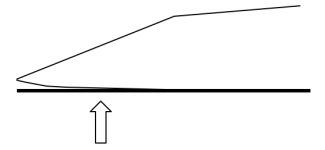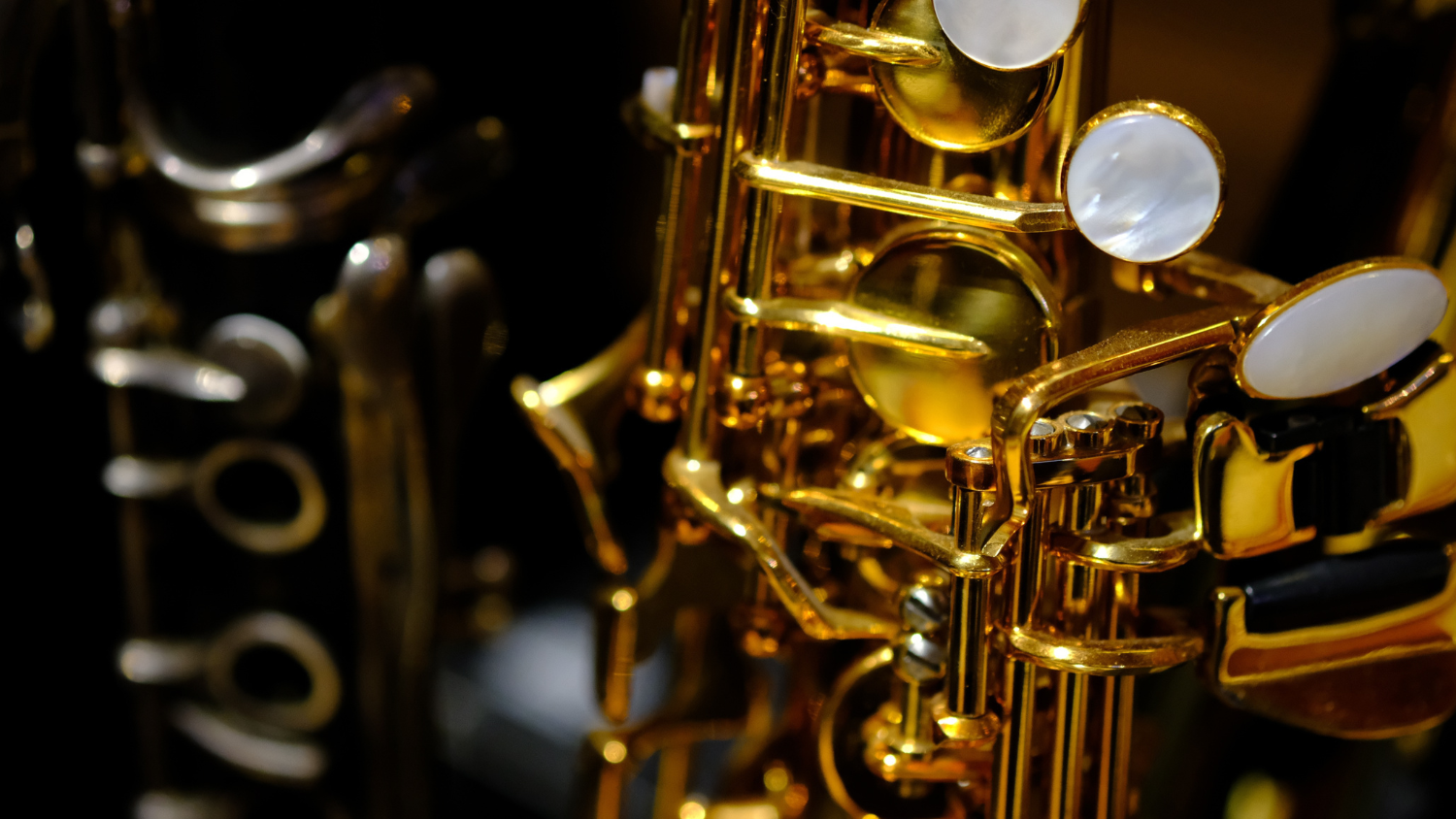Introduction
Embouchure pressure and mouthpiece placement are important aspects of playing the saxophone. Without the correct embouchure pressure and mouthpiece placement, a saxophonist’s tone, intonation, response, musical expressiveness and performance enjoyment will be severely hindered. In addition, it is extremely important to establish correct embouchure pressure and mouthpiece placement in the very beginning stages of development since it maybe difficult to change once it has been learned incorrectly. Therefore, beginning saxophonists and their teachers should carefully monitor embouchure pressure and mouthpiece placement from the very first lesson, correcting any flaws until the correct pressure and placement becomes a habit.
Determining Proper Embouchure Pressure
Playing with the correct amount of embouchure pressure is a very important aspect of saxophone performance since too much or too little pressure will have an adverse effect tone production, intonation and response. Saxophonists that play with too much embouchure pressure usually have a small pinched tone, intonation that is sharp especially in the upper register, poor response in the low register, problems with producing vibrato and a sore lower lip. It is essential that saxophonists check their embouchure pressure to determine if the proper amount is being used and make corrections if necessary.
Embouchure Pressure: Classical Vs Jazz
There are two primary methods saxophonists use to check for correct embouchure pressure. The first method is to start a tone using only the mouthpiece and neck of the instrument. There are two pitches that can be produced depending on how much pressure is applied to the mouthpiece. The embouchure pressure used by most classical performers produces a Concert Ab with the mouthpiece positioned on the neck where it is normally placed when the saxophone is in tune. However, some jazz saxophonists play with less embouchure pressure producing a Concert G.

Some saxophonists may produce a pitch higher than the Concert Ab indicating that too much pressure is being applied to the mouthpiece. If this is the case, the performer should reduce the amount of pressure applied by the lower lip, jaw and teeth while keeping the air pressure constant in the oral cavity. It is important to drop the lower jaw reducing embouchure pressure without reducing the air pressure inside the mouth. Simply blowing softer is not the answer. The air pressure inside the mouth should not change.
A second method used to check correct embouchure pressure is for the saxophonist to play octaves slurring from the lower octave to the upper and then back down. An excellent note to use for this exercise is low “A”, on the second space of the staff. The saxophonist should play a low “A” and then slur up to the “A” located an octave higher by pressing the octave key. No change in air or embouchure pressure should take place when doing this. After the upper “A” sounds, the saxophonist should release the octave key and the lower “A” should sound immediately. If the low “A” does not sound immediately or is delayed, embouchure pressure is too great and should be reduced by dropping the jaw while keeping the air pressure constant. When the jaw pressure is reduced and the low “A” sounds, the correct embouchure pressure for performing both notes has been established.
If jaw pressure is reduced and the low “A” still does not sound, the saxophonist should take a little more mouthpiece into the mouth. This should allow the reed to vibrate more freely improving tonal resonance and response. With correct embouchure pressure, the performer should be able to slur octaves in 16th notes with ease assuming the instrument and reed is in proper playing condition. This exercise can also be performed on a variety of other notes that use only the octave key to change registers.

It is important for saxophonists to remember that the change in octaves is due only to the octave key being pressed and not due to a change in pressure. It is also very important for saxophonists not to move their embouchure when playing in different registers of the instrument. Some performers develop a habit of involuntarily moving the lower jaw especially when playing in the low register. This movement should be avoided, (in classical playing), as it causes notes to have different timbres and may also cause intonation and response problems.
Another variation of this exercise is to allow another person to quickly depress and release the octave key while the saxophonist is holding the note. By doing this, the embouchure cannot be adjusted for each note since the performer does not know when the octave key will be depressed and released. This is an excellent exercise for stopping involuntary movement of the embouchure.
One consistent embouchure setting should be used to play the entire range of the instrument. This setting can be found by playing the lowest note on the saxophone, the low “Bb”. The saxophonist should play low “Bb” remembering the amount of embouchure pressure used and the mouthpiece placement. This setting should then be maintained as the saxophonist plays in all other registers.
Determining Proper Mouthpiece Placement and Angle
Proper mouthpiece placement and mouthpiece angle have a huge effect on saxophone tone and response. The exact placement of the mouthpiece varies depending on the facial features of the performer and the type of mouthpiece facing used.
Mouthpiece angle can also vary especially when switching from one saxophone type to another, such as alto to tenor. Since every saxophonist is a unique individual, each performer must learn the exact mouthpiece placement and angle through experimentation and trial and error. However, there are some general guidelines that all saxophonists should follow to get them headed in the right direction.
Mouthpiece Placement
When the correct amount of mouthpiece is placed in the mouth, a saxophonist’s lower teeth will be in line with the point at where the reed and mouthpiece separate. This is equal to taking about one-half inch of mouthpiece into the mouth. To find the exact point, the performer can carefully slip a sheet of paper in between the reed and mouthpiece and slide it down until it first meets resistance. This resistance identifies the point where the reed and mouthpiece separate and is the fulcrum for optimum control. The saxophonist can mark this point on the reed and then make sure to take enough mouthpiece in the mouth to allow the lower teeth to be in line with this point.

The performer should also experiment with taking slightly differing amounts of mouthpiece in the mouth while listening for optimum tone and control. If not enough mouthpiece is taken into the mouth, a small muted tone and poor instrument response will be the result. If too much mouthpiece is taken, the tone will become harsh and uncontrolled.
If saxophonists are having problems with note response especially when slurring quickly from one register to the next and they are sure their embouchure pressure is correct, taking a little more mouthpiece into the mouth should solve the problem. Sometimes performers with response problems do not have enough mouthpiece in the mouth to allow the instrument to work properly.
Mouthpiece Angle
Mouthpiece angle is also a factor in tone production and instrument response. The proper mouthpiece angle slightly varies depending on the type of saxophone being played and the playing style of the performer. The mouthpiece angle for soprano and alto saxophones is slightly downward. When playing the tenor and baritone saxophones, the mouthpiece is angled less, almost going straight in the mouth.
As a mouthpiece is angled more into the body, the lip pressure moves forward from directly on top of the lower teeth to a position more on the front of the teeth. This movement will have an effect on the tone and response of the instrument. There is some latitude in the exact mouthpiece angle to be used as many performers angle their instruments in a way that assists them in achieving a desired tone quality. Perhaps the best way for saxophonists to determine the correct mouthpiece angle is to try different positions while listening to the tone. When the tone is at its optimum resonance, the correct angle has been established.
Summary
Correct embouchure pressure and mouthpiece placement are extremely important aspects of learning to play the saxophone. It is very important to develop the correct embouchure pressure and mouthpiece placement from the very beginning but if saxophonists find they are not doing these things correctly after playing for a period of time, there is still a very good chance it can be corrected with the right instruction, through careful monitoring and much patience.






